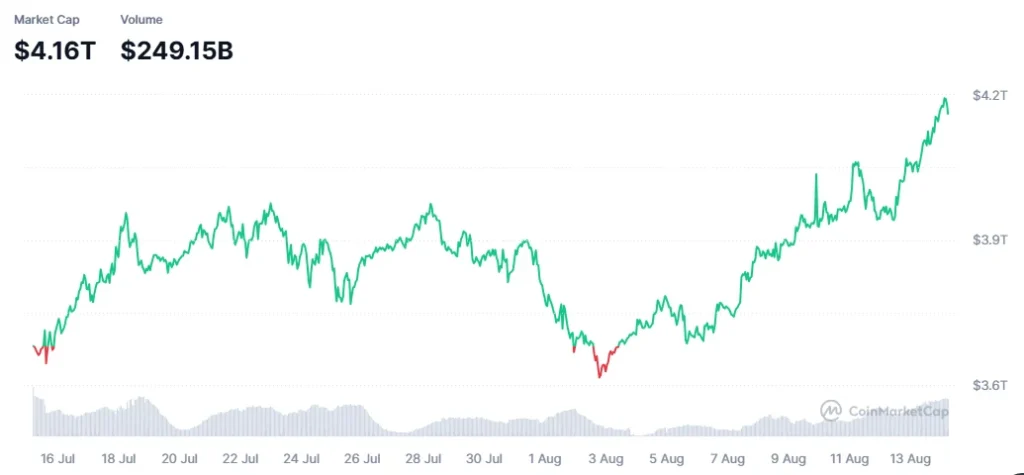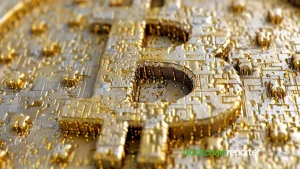
Introduction
Imagine having to carry a heavy load of copper, silver, gold, or grain when you go shopping. Compare it with carrying a few tokens in your wallet. The former toil had been carried out for centuries before a few ingenious traders started using statements written on paper, vowing to pay the stipulated amounts of copper, silver or gold. This was a lot more convenient than carrying weights of commodities. Later on, Chinese emperors during the eleventh and then thirteenth century legalized the method by issuing stamped pieces of Melbury bark, laying the foundations of fiat currency.
What is Fiat Currency?
The fiat currency is a legalized token issued by the government for financial transactions. Before 1971, it used to be backed by a fixed quantity of gold in the national treasury. Then, Richard Nixon announced that the USD did not need to be pegged to gold. Today’s fiat currencies are based merely on trust on the government that issues it.
Gold Standard for Paper Currency
You might wonder if governments print money, why they don’t print enough to meet the needs of every citizen and eliminate poverty. However, money is printed under certain strict rules and regulations which do not allow unlimited printing. Previously, only the amount which was pegged to the gold reserves could be published. But then governments felt that they were not at liberty to take actions when there was an economic emergency.
Therefore, gold standard was abolished gradually, and printing was made subject to economic factor. Quantitative tightening and easing came into effect. In economic uncertainty, printing is resumed, and it was stopped when there was no immediate danger to economy.
Pros and Cons of Gold Standard Vs Pure Fiat
Both systems have their pros and cons. The gold standard is advocated by many because in return for our paper bills, we can get a stipulated amount of gold at any time. Very currency note was backed by something that has inherent value. However, this system had two disadvantages. Firstly, governments were helpless when they felt that they needed more money. They could print more only when they had acquired more gold. Secondly, gold sometimes became scarce, hampering the process of adding money to the national treasury.
The modern fiat currency system is good because it provides a lot more liberty to governments. They do not need to wait to add more gold to the national reserves. But it is considered unreliable because it has nothing to back it. There is no physical commodity that pegs it.
Cryptocurrency and Fiat currency
Although fiat currencies still reign supreme, they are being challenged by digital currencies which have secured $4 trillion market cap at the time of writing, source – CoinMarketCap.

Similarities
1. De-Pegged
Cryptocurrency and fiat currency are similar in that neither of them is pegged to any physical commodity. Although stablecoins are pegged to the USD, the USD in itself has nothing to back it except the promises of the government. Below is a tweet proving that stablecoins are pegged to stable assets like USD.
2. Transaction Charges
Another similarity lies in the fees that the transactions incur. There is a huge variety in the imposition of charges, which may differ bank to bank even within a country. When compared to cryptocurrencies, sometimes, fiat currency gets an edge and at other times cryptocurrency is cheaper to send and receive.
3. Energy Consumption
Energy consumption in fiat currency happens only when the money is printed, or when the banks use computers to perform and verify transactions. Mining-based proof-of-work blockchains like $BTC require immense consumption of energy. A rough estimate shows that the electricity to mine 1 $BTC is enough to run 85-100 houses for a year in the USA.
Differences
1. Official Vs Unofficial
The main difference between the two is that fiat currencies are official and legal tokens issued and backed by governments. They are official tokens of value. They are issued by a central authority. Cryptocurrencies are still not official. No government issues or owns them. A few countries are even making regulations against cryptocurrencies. Cryptocurrencies are created through decentralized protocols (mining, staking, or other consensus mechanisms) without a single controlling authority.
2. Manner of Production and Distribution
Both currencies differ in the manner of production and distribution. There is no maximum supply of fiat currency. The government can print as much money as the economic needs dictate. In contrast, most cryptocurrencies have a maximum supply, which makes them deflationary. For example, no more than 21 million Bitcoins can ever be mined.
3. Centralized Vs Decentralized
Another difference is that fiat currency is centralized, and cryptocurrency is decentralized. Every transaction that you perform in fiat currency can be viewed by your authorities. All your credentials also go with your transactions. On the other hand, a cryptocurrency transaction can be viewed by anyone on the blockchain, but your identity remains hidden unless you are operating on a centralized exchange that has got your KYC.
Being decentralized, cryptocurrencies are international in true sense of the word. $4 Trillion market cap of the cryptocurrency market proves that the users come from every continent and every country.
4. Irreversibility of Crypto Transactions
Reversibility is another difference between the two currencies. If banks find a transaction suspicious, they can freeze the account or even reverse the transaction. This is not possible on a blockchain. Crypto transactions are absolutely irreversible when they are confirmed on a blockchain.
5. Level of Volatility
Although inflation is an ongoing process and it happens with the currency of every country, it never happens that a fiat currency has fallen 87.5% in a year. But this was what happened to $BTC when it fell from the price of $69000 in November 2021 to $15500 in December 2022. Many low-cap cryptocurrencies undergo rug pulls every day. This level of volatility is unimaginable in fiat currency because of the level of people’s trust.
Cryptocurrencies are still new as compared to the fiat currency. Adoptions and regulations are bringing many large-cap coins to the main stream. Trump has recently endorsed Bitcoin Strategic Reserve just like USD or gold reserves. Also, ETF approvals are enabling many coins to be traded like traditional stocks. Such changes will help remove high volatility from the crypto market.
Conclusion
Fiat currency is an official token backed by the government. Once it used to be backed by gold but now it stands on government’s promises. Fiat currencies are centralized and have no privacy. Cryptocurrencies are decentralized and are difficult to track. They are extremely volatile at the moment, but adoption will improve the situation in the near future.
Frequently Asked Questions
What is fiat currency?
Fiat currency is government-issued money not backed by a physical commodity like gold, relying solely on public trust.
How does cryptocurrency differ from fiat currency?
Cryptocurrency is decentralized, has a limited supply, and transactions are irreversible, unlike centralized fiat currency.
Why was the gold standard abandoned?
Gold limited governments’ ability to print money during economic emergencies.








